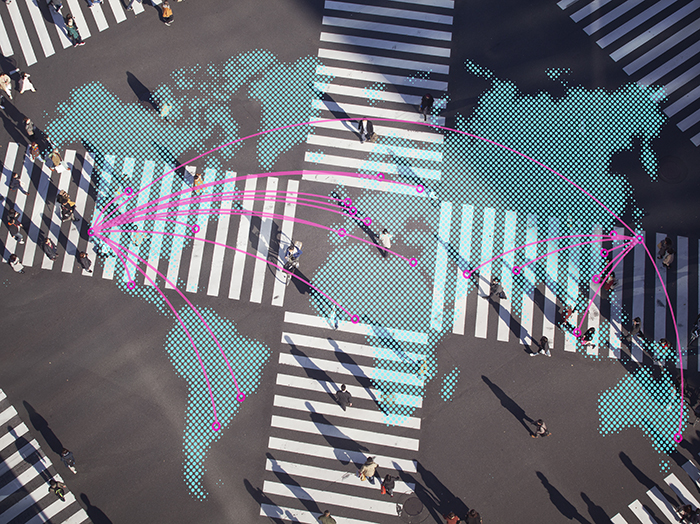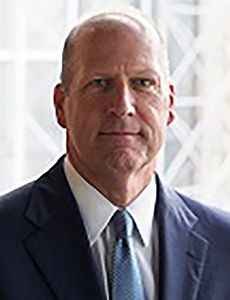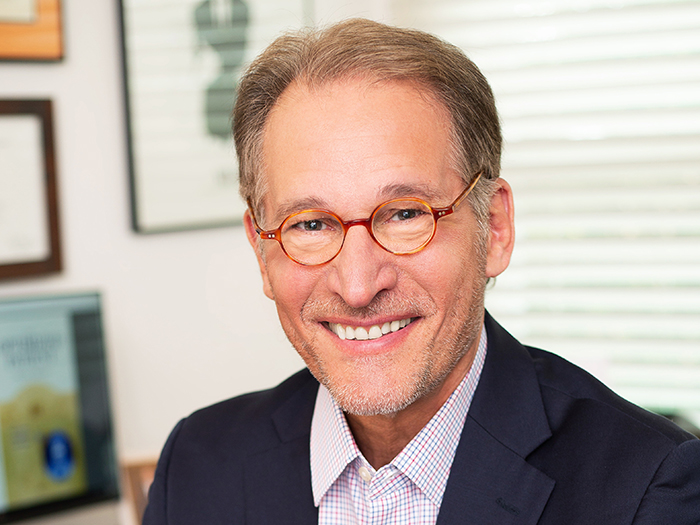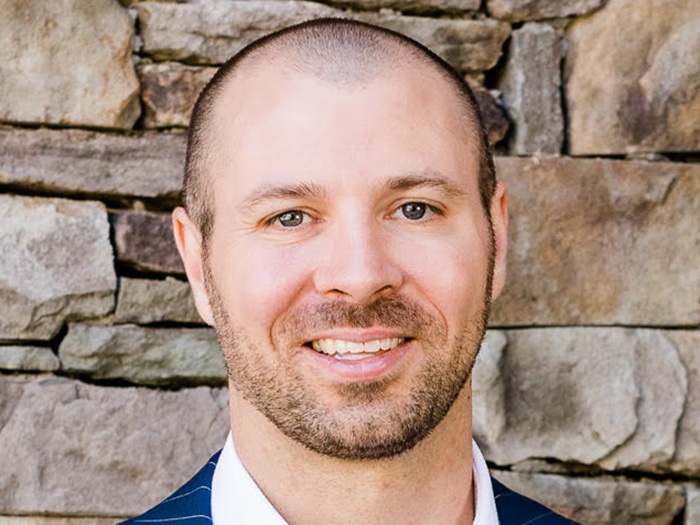Former U.S. Senator John Sununu Shares His Views on the Crisis in Ukraine and Other Global Risks

If the past few years have made anything clear it is that geopolitical risk is always changing — often with tragic consequences. 2020 saw a global pandemic that has killed over 6 million people globally and has resulted in hundreds of thousands of deaths.
Then, partially as the result of a still raging pandemic, 2021 saw a myriad of supply chain issues. Cyber attackers wreaked havoc on businesses, which further suffered through the increasingly frequent and strong storms caused by global climate change.
Now Russia’s deplorable assault on Ukraine is reawakening conversations about political risk in the region that had sat mostly dormant since the Cold War ended in 1991.
But when tragedy strikes, insurance is there to respond by helping people and businesses make things whole again. These increasingly complex global risks require a risk management and insurance approach that is just as quick to adapt.
During a live Tuesdays with Lloyd’s event at the RIMS annual conference, Lloyd’s Council Member and former U.S. Senator John Sununu detailed how issues including the war in Ukraine and other emerging geopolitical risks are affecting global insurance and reinsurance markets.
After the Tuesdays with Lloyds event, Senator Sununu shared some of his thoughts on Russia’s invasion of Ukraine, the effects of global climate change and the current political risk landscape with Risk & Insurance®.
R&I: Firstly, can I start with the question that’s probably on everyone’s mind, which is about the impact that the Ukraine crisis will have on the Lloyd’s market?

John Sununu, Lloyd’s council member and former U.S. senator
John Sununu: 2021 certainly wasn’t an easy year, as the impacts of the COVID-19 pandemic lingered over economies and communities, and we experienced the fourth largest year for natural catastrophe events since 1970.
The challenges we thought were slipping into rear view have now been replaced with new ones, not least the devastating situation in Ukraine, triggering an economic and humanitarian crisis that is being felt all around the world.
It would be remiss to start without saying our thoughts, sympathy and support are with the people of Ukraine, and we join them in hoping for a swift end to this conflict. For its part, Lloyd’s is working closely with global governments, regulators and our market to deliver the sanctions we hope can speed the arrival of peace.
The conflict has once again highlighted how connected our world is and how quickly events travel from one country to affect entire regions. In this context, our work to help people and businesses build resilience in the face of catastrophic events such as war, cyberattack, pandemic and climate change couldn’t be more crucial.
But the Lloyd’s market has an exceptionally strong capital position and balance sheet, resulting in a central solvency ratio of 388% — an increase of over 100% compared to 2018, reinforcing the resilience of the Lloyd’s market to all of our customers and stakeholders.
While Lloyd’s has a global footprint, our direct exposures in Ukraine and Russia represent substantially less than 1% of written premiums, and we’re confident the current situation poses a low risk to our solvency and our effective operation as a market.
Certain classes of business, such as credit, cyber and political risk are naturally more exposed to the fallout, but our current and up-to-date analysis affirms that we are operating within manageable tolerances for these classes.
The conflict in Ukraine will likely present a major loss event to the Lloyd’s market. It will take many months (or even years) to understand the reality of such losses.
The world is too connected for any of us to assume we will be unaffected by these events, and so in the meantime, we’ll continue our frequent engagement with global governments, regulators and our partners across the market to ensure we can respond quickly to any changes and developments in the situation.
R&I: The outbreak of the war in Ukraine has fundamentally changed the macroeconomic and geopolitical picture. A global pandemic has spread across borders and reshaped our societies. A changing climate is redefining our relationship with the natural world. In a world in which extremes are becoming the norm — what role do you think insurance can and should play?
JS: Insurance is built on the principle that we’re stronger together and that the pooling and sharing of risk between many can protect the misfortunes of the few.
So it has a clear role to play in helping society build resilience.
As a general rule, insurance works well to address the risks inherent in the lives and livelihoods of our customers, whether enabling individuals to drive cars, protect their property and valuables, or protect their incomes when they lose their jobs or health.
And for businesses, insuring assets, cargoes, inventories, payments, supply chains and the people who work there enable them to make more confident decisions based on an ability to lay off the risks they do not want to take.
However, there are risks that are too big for the private sector to insure alone. These are systemic risks. The pandemic is one of these. Climate change is another.
The basic maths of the pandemic make the point: The global non-life insurance market has about $2 trillion of resources to pay all its claims, yet the IMF has estimated that in 2020 alone, OECD governments were forced to inject over $14 trillion into their economies to protect them from the worst impacts of the virus, and the support costs continued to increase into 2021 and 2022.
Where most catastrophes are limited by time and geography — for instance, a hurricane affects a particular place for a defined length of time — COVID-19 has been present globally for more than two years — it is everywhere, all the time.
Indeed, we are not certain when the pandemic began, and it has certainly not yet ended.
The other challenge posed by systemic risks is their capacity to generate significant second order impacts. In the case of COVID-19, a health risk quickly transformed into an economic, environmental and even social risk, spanning borders and industries.
The vaccines, however, have proved to be game changing. Their impact on the virus has improved the predictability of medical outcomes, unlocked investment, restarted trade and allowed governments to start rolling back their emergency support for their economies.
In the wake of the pandemic, Lloyd’s has been working with governments around the world to develop Black Swan Re: A reinsurance framework that enables cover for unexpected ‘black swan’ events, like the pandemic but not limited to the pandemic.
Combining public and private finance, it offers a model for how to build resilience against systemic risks: paid for by those protected, guaranteed by government, and enabled by private capital.
It’s important we carry this innovative and collaborative approach forward to build resilience against future crises.
But no sooner had we begun to emerge from the pandemic than we have been confronted by Russia’s invasion of Ukraine and the extraordinary suffering and misery that has been inflicted on the Ukrainian people.
It has again shown how systemic events unfold: how a regional conflict can trigger global second-order economic, political and humanitarian impacts.
These have been seen most clearly in economic sanctions, dislocation to energy and agriculture prices and huge cross-border refugee migration. It is yet another reminder of how connected our world is and how quickly risks move from one part of the world to another.
R&I: Do you think businesses are too focused on events or risks that are happening now, rather than scanning the horizon and preparing for the unexpected?
JS: I do believe that in recent times we have become increasingly comfortable with business models that have embraced just-in-time delivery, extended supply chains and high levels of financial gearing.
We have celebrated and rewarded businesses that have pushed aggressively for top-line and bottom-line growth. And we have asked too few questions about the ability of these enterprises to withstand shocks and setbacks.
The banking industry learned this painful lesson in the financial crisis of 2008/2009, but the lesson has not been learned by all participants in the global economy.
As we have moved from a two-year pandemic into a war on mainland Europe for the first time in nearly 80 years, none of us needs telling that the world is facing extraordinary risks and that we must shrug off the complacency engendered by the decades of peace and economic growth we have enjoyed in Europe and North America.
The important message is this: We can no longer view risks in isolated categories.
Today’s risk environment is a vast, overlapping series of threats that demand careful consideration and proactive preparation from all of us. They also demand much greater partnership between business and government.
The events that have disrupted our world in recent years have been unexpected, but not unforeseen.
We knew from health research that a pandemic was likely — we just didn’t think it would be the coronavirus in 2020.
We knew from political analysts that the surge in cyberattacks, misinformation and anti-West rhetoric from Russia pointed to its growing territorial ambitions — yet few of us thought they would invade a peaceful country in 2022.
So, when it comes to climate change, the writing is on the wall. The body of research revealing its present and potential impacts is well established. The question is whether we will heed the call. Whether we will work to build resilience now or wait for the real damage to kick in.
The encouraging thing is that COP26 has created a clear imperative to act across governments and businesses.
Insurance is proud to be playing its part; through the products we provide, the research we produce and the customers we protect.
We cannot predict the future; but together, we can prepare for it.
R&I: Despite the manifold challenges we see around us today, in the past two years the world has also witnessed a step change in our perception of and approach to climate change (albeit amidst plenty of well-intentioned rhetoric). As we face this decisive moment in our fight against climate change and the transition to net-zero, where do you see the opportunities for risk and insurance professionals to add value?
JS: Climate change is the biggest systemic risk the world faces.
It’s another risk that is unrestrained by time or geography. It carries both a moral and a financial imperative. It affects both local communities and global systems. It is creating both immediate physical damage and prospective transition risks.
So, the solutions we put in place must be just as expansive. For Lloyd’s and the insurance industry, there are three levels to building this resilience. First, ensuring the resilience of our own operations. Secondly, supporting the insurance market’s resilience. And thirdly, building society’s resilience.
For our own operations, at COP26, Lloyd’s signed up to the Net Zero Insurance Alliance and Glasgow Financial Alliance for Net Zero.
As a member of those alliances, we’ve committed to make the emissions from the Lloyd’s Building net zero by 2025. We’re also committed to achieving a net zero investment position for our £3bn Central Fund by 2050.
Moving from ourselves to our market resilience, we also committed to help insurers within Lloyd’s develop the plans needed to support a net zero underwriting position by 2050.
We have already begun by guiding the market to no longer underwrite new thermal coal mine and thermal coal power projects, no new arctic drilling projects and no new oil sands projects.
As part of Lloyd’s annual capital planning process, all Lloyd’s syndicates are required to submit their plans to manage the transition of both their underwriting and investment portfolios to net zero by 2050.
Our focus remains on ensuring an orderly, but urgent transition: One that supports our customers as they move away from carbon-intensive energy sources, one that avoids creating cliff edges — but one that also ensures we move at the speed required by the challenge.
And, of course, we will need to make increasingly tough decisions to cut off support from those businesses unable to make the transition.
So we have near- and long-term commitments, but the important thing is driving action in between.
That’s why measurement and monitoring frameworks like the Global Resilience Index Initiative, launched by the Insurance Development Forum at COP26, are so important to make sure we are tracking the impact we’re having on global resilience.
We have also invested in research, creating a global community and platform called Futureset. Futureset is supporting analysis into the medium term impacts of armed conflict on the risk landscape: From supply chains and cybersecurity, to inflation and the all-important race to net zero, which will need to be adapted for the energy and political environment that emerges from this crisis.
Supported by Futureset, we’re also working to build increased societal resilience.
Our work with The Prince of Wales’s Sustainable Markets Initiative — where we chair the Insurance Task Force — is designed to bring the global insurance industry together to develop the products and solutions that will help communities build climate resilience.
Through the SMI, we’ve brought the insurance industry together to build the solutions that will protect communities from climate change. We launched a showcase of those solutions last year, ranging from hydrogen supply chain cover to microinsurance schemes for coffee farmers, and we look forward to expanding these solutions in the coming years.
We have also set up the Disaster Risk Facility at Lloyd’s: A collaboration between seven insurers that pools nearly $450 million of capacity to help developing economies build resilience against natural catastrophes.
Through the DRF, we were able to launch the world’s first retail parametric cyclone insurance product, Redicova, last year.
Parametric products are central to building resilience. They work by agreeing certain conditions that, when met, allow claims to be paid automatically to the customer — supporting a quicker recovery for our customers.
In this case, Redicova monitors windspeeds and issues payments when the conditions for a severe tropical cyclone are met, eliminating the need for lengthy and labor-intensive physical loss assessments.
It’s just one example of how innovative insurance products are helping communities prepare for and respond to the impacts of climate change.
R&I: What do you think wider implications of the crisis in Ukraine are? Could the Ukraine conflict impact the world’s efforts to transition to net zero?
JS: We recognize that the ongoing and devastating crisis in Ukraine is likely to have significant implications for many managing agents’ transition strategies, particularly increasing near-term focus on secure, diverse and affordable supplies of energy.
However, it’s imperative that we continue to work towards a sustainable underwriting and investment approach with a portfolio of customers and businesses that support our commitment to reach net zero by 2050.
We have asked managing agents to develop tailored ESG strategies that are appropriate for their businesses in making the transition to net-zero. We are committed to supporting these businesses in achieving this as soon as possible.
And we will continue to challenge those where we feel they are not credible or robust enough, with an expectation that in such cases, the managing agents will revisit and strengthen their plans.
R&I: Do you think the Ukraine crisis will reawaken businesses to the importance of political risk?
JS: I believe so, yes.
The succession of events such as Brexit, the election of Donald Trump as U.S. President, the pandemic, and now Ukraine make it clear that political risk events typically seen as low likelihood but high impact demand closer attention in the board — and more engagement beyond the board too.
It is also clear that for some businesses, there will need to be a strategic reevaluation of footprints, supply chains, relationships, company cultures, business functions and risk appetite to ensure resilience in a world that will be profoundly changed by the Ukraine conflagration.
And having spent many years working on international affairs in Congress, I know how unpredictable world powers can be — and how difficult it can be to decipher motives in advance. &










